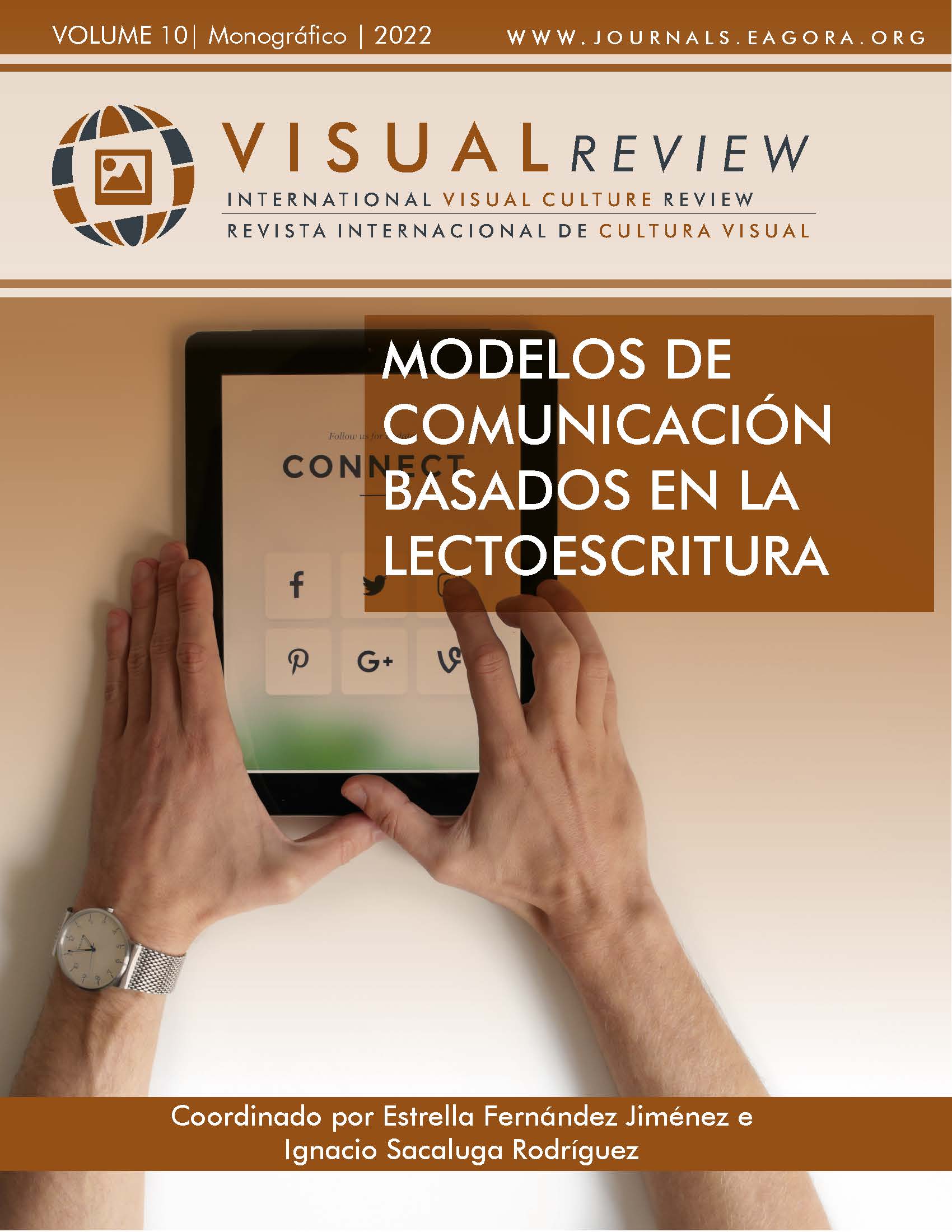New Audiovisual Trends with the One-person Consumme as the New Reality
From group experience to personalized individual consumption
DOI:
https://doi.org/10.37467/revvisual.v9.3610Keywords:
audiovisual, VOD, cinema, social networks, television, Internet, one-personAbstract
The emergence of different broadcasting and streaming companies have involved the proliferation of new films and series available everytime and everywhere. This supposes a new conception oriented to a new dynamics that converts the audiovisual experiences with a group of people- going to the cinema, watching TV at home- to a one-person experience.- through an electronic device-. The aim is to analyze if this situation is merely circumstantial, or, a new trend that means that we have a new model with customized and one-person audiovisual products.
Downloads
Global Statistics ℹ️
|
864
Views
|
1679
Downloads
|
|
2543
Total
|
|
References
AIMC (Asociación para la Investigación de Medios de Comunicación), EGM (Estudio General de Medios) correspondiente al año móvil: 1º, 2º y 3º ola de 2021. Disponible en: http://www.aimc.es/egm/datos-egm-resumen-general/ [Consultado el 10 de junio de 2022]
Barlovento Comunicación (2021) Análisis de la Industria Televisiva-Audiovisual 2021. Disponible en: https://www.barloventocomunicacion.es/wp-content/uploads/2022/01/2021-ANALISIS-TELEVISIVO-BARLOVENTO-COMUNICACION-1.pdf
Bengoechea, A. G., & García, F. G. (2020). El uso de YouTube en la comunicación de marca país: el caso de España Global. Las redes sociales como herramienta de comunicación persuasiva, 265.
Bort, I., García, S. & Nuñez. M. (2011). Nuevas Tendencias e hibridaciones de los discursos audiovisuales en la cultura digital contemporánea. Actas del IV Congreso Internacional sobre análisis fílmico. Universitat Jaume I, Castellón 4-6 de mayo de 2011. Ediciones de Ciencias Sociales.
Delicado, A., & Rowland, J. (2021). Visual representations of science in a pandemic: covid-19 in images. Frontiers in Communication, 6(645725). https://doi.org/10.3389/fcomm.2021.645725 DOI: https://doi.org/10.3389/fcomm.2021.645725
García, D., Sánchez-Bayón, Antonio (2021). Consumo cultural y entretenimiento en la cuarentena de Covid19 en España ¿Crisis o revisión de la economía naranja?. Visual Review. International Visual Culture Review, 8 (1), 131-149. DOI: https://doi.org/10.37467/gka-revvisual.v8.2805
Gutiérrez Lozano, J.F. & Cuartero, A. (2020) El auge de Twitch: nuevas ofertas audiovisuales y cambios del consumo televisivo entre la audiencia juvenil. Ámbitos, Revista Internacional de Comunicación. Nº 50, Edición Otoño, Año 2020, pp. 159-175. DOI: https://doi.org/10.12795/Ambitos.2020.i50.11
Kantar Media (2022) Media Trends and Predictions 2021. Disponible en: https://www.kantaribopemedia.com/wp-content/uploads/2020/11/2021-Media-Trends-and-Predictions-Report-ES.pdf
León Sáenz de Ybarra, J.L. (2022). Marcas, publicidad y neomedia. Prospectivas de acción en tiempos de pandemia. Revista Comunicación, Vol. 20, Nº 1, año 2022, pp. 5-24 Fordham Universities Libraries.
DOI: https://dx.doi.org/10.12795/Comunicacion.2022.v20.i01.01 DOI: https://doi.org/10.12795/Comunicacion.2022.v20.i01.01
Navarro Robles, M. & Vázquez Barrio, T. (2020). El consumo audiovisual de la Generación Z. El predominio del vídeo online sobre la televisión tradicional. Ámbitos, Revista Internacional de Comunicación. Nº 50, Edición Otoño, Año 2020, pp. 10-30. DOI: https://doi.org/10.12795/Ambitos.2020.i50.02
Rubio Gil, Á. (2010). Generación digital: patrones de consumo de Internet, cultura juvenil y cambio social. Revista de Estudios de la Juventud, n.º 88, pp. 201-221
Sanz Aznar, J. (2022). El marketing del neuromarketing en la industria cinematográfica. Revista Comunicación, Vol. 20, Nº 1, año 2022, pp. 25-43 Fordham Universities Libraries.https://dx.doi.org/10.12795/Comunicacion.2022.v20.i01.02 DOI: https://doi.org/10.12795/Comunicacion.2022.v20.i01.02
Downloads
Published
How to Cite
Issue
Section
License
Those authors who publish in this journal accept the following terms:
-
Authors retain copyright.
-
Authors transfer to the journal the right of first publication. The journal also owns the publishing rights.
-
All published contents are governed by an Attribution-NoDerivatives 4.0 International License.
Access the informative version and legal text of the license. By virtue of this, third parties are allowed to use what is published as long as they mention the authorship of the work and the first publication in this journal. If you transform the material, you may not distribute the modified work. -
Authors may make other independent and additional contractual arrangements for non-exclusive distribution of the version of the article published in this journal (e.g., inclusion in an institutional repository or publication in a book) as long as they clearly indicate that the work was first published in this journal.
- Authors are allowed and recommended to publish their work on the Internet (for example on institutional and personal websites), following the publication of, and referencing the journal, as this could lead to constructive exchanges and a more extensive and quick circulation of published works (see The Effect of Open Access).













